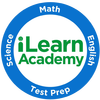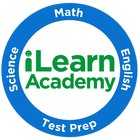|
Experts agree summer learning loss is a leading cause of the achievement gap among students. This has many parents wondering how to build learning into the family's summer schedule. On one hand, an educational family trip could help your student keep her mind engaged during the long summer months out of school. On the other hand, trudging through Gettysburg when you could be relaxing on a beach is not every parent's idea of a good time. Here's the good news: You can make any family vacation educational with the right approach. Use these tips to sprinkle in some learning alongside your fun this summer. Your children's report cards will thank you! Make a Budget Every family vacation requires a budget, and putting one together is a great way to practice math with your kids (not to mention financial skills). If you'd rather not share how much you're spending on vacation, work in percentages. Ask questions, like: What percentage of the budget should go toward food? A hotel? Activities? Will those amounts be sufficient? Here are some math skills that budgeting builds:
Finding a book that complements your vacation activities is a great way to build reading into your family's vacation planning. Camping in the Pacific Northwest? Check out a story set in nature, like My Side of the Mountain. Taking a road trip to Florida? Try the smart, coming-of-age story about Floridian preteen Sally Freedman, in Starring Sally J. Freedman as Herself. Reading the book together helps your student stay engaged. Look up new words, discuss the story's themes and ask your child to make predictions about where the story is heading. For younger children, reading books about family vacations is an excellent way to manage behavior. Use the story to talk about appropriate behavior at the beach, hotel or campfire. Tell your child what you expect from them, and reward them when they deliver. Keep a Journal
Vacation journals are not only a fun way to record family memories, they help students practice writing. Maximize the journal's skill-building potential by coming up with a writing prompt for each day of vacation. Here are some ideas to get you started:
Every destination has a history, even if it doesn't contain historical landmarks. Before you leave home, take some time to research your vacation spot's backstory as a family. A grade-level appropriate educational database is a good place to start. For elementary, try Kids InfoBits. For middle school, try Research in Context. For high school, try Student Edition. Contact your destination's local library or historical society to see if there are any family-friendly events planned during your stay. These events run the gamut from farm expos to archaeological digs. Street fairs are another engaging way to get to know the community you're visiting. Summer Learning Programs Looking for more ways to combat summer learning loss? Check out iLearn Academy's flexible summer tutoring options. Just two hours each week can help your students maintain their math and reading skills and get ahead in upcoming classes. Enroll by June 8 to save $50 on tuition and receive free weekly test prep. Call 847-834-0791 for more information or to enroll!
0 Comments
If you have a child in 8th grade, he or she will take the PSAT 8-9 this coming October. Some school districts use this standardized test to determine high school class placement. If your student wants to take advanced math or English in high school, earning a good score on this test is important. Schools in Illinois use the SAT Suite of Assessments to track students' college and career readiness. The PSAT 8-9 is the first test in that series, and parents and teachers can use it to get a sense of a student's skill level and check how her scores compare to test-takers across the country. The PSAT 8-9 is cumulative, so students cannot prepare overnight -- or even for just a few weeks. The best way to secure a high score is to become very familiar with the test structure and material and prepare incrementally. What Does the PSAT 8-9 Look Like? The PSAT 8-9 has four sections: Reading, Writing and Language, Math with a calculator, and Math without a calculator. Test-takers receive 55 minutes for Reading, 30 minutes for Writing and Language, and 60 minutes for both Math portions. The Reading and Writing sections are combined to yield an Evidence-Based Reading and Writing score out of 720 points. The two Math sections are also scored together out of 720 points. Therefore, the highest score a student can earn on the PSAT 8-9 is a 1440. What's on the PSAT 8-9? Here is a section-by-section breakdown of the material that appears on the PSAT 8-9 and the skills that are tested: Reading Test: The PSAT 8-9 Reading test is completely multiple choice and based off accompanying passages and, occasionally, informational graphics like charts and graphs. The reading selections might be standalone passages or paired passages. (Paired passages are two excerpts placed side by side so students can compare and contrast.) There is always one excerpt from literature, one passage or pair of passages from a U.S. founding document or the conversation it has inspired, a social science passage (economics, psychology, or sociology), and two science passages (Earth science, biology, chemistry or physics). The PSAT 8-9 never tests on outside knowledge, so all the information needed to correctly answer the questions is contained in the passages. The Reading section measures three main skills:
Writing and Language Test:
The PSAT 8-9 Writing and Language test is completely multiple choice and based off accompanying passages and, occasionally, informational graphics like charts and graphs. Students will answer questions about how best to improve underlined portions of the passage. They may be asked to improve:
The PSAT 8-9 Math test is part multiple choice, part grid-in (see below for an example of a grid-in question). There are two sections to the Math test: one where students can use calculators and one where they cannot. The Math portion of the test covers two main skill areas:
Preparing for the PSAT 8-9 The PSAT 8-9 tests grade-appropriate skills, so much of your student's preparation should be review. However, the breadth of material is so wide that it's difficult for students to effectively prepare for this test on their own. For the best results, prepare incrementally using real PSAT 8-9 test material. iLearn Academy offers summer PSAT 8-9 prep courses that use real test material to familiarize students with the format and content of the test. These courses also help students avoid summer learning loss. Enroll before May 27 to receive two free hours of test prep each week, in addition to your student's standard math or English tutoring. Call 847-834-0791 to enroll today. |
Categories |
We make a personal commitment to ensure each student is well-prepared for the academic school year.
Dedicated to helping your student succeed.
©
iLearn Academy 2019





 RSS Feed
RSS Feed
